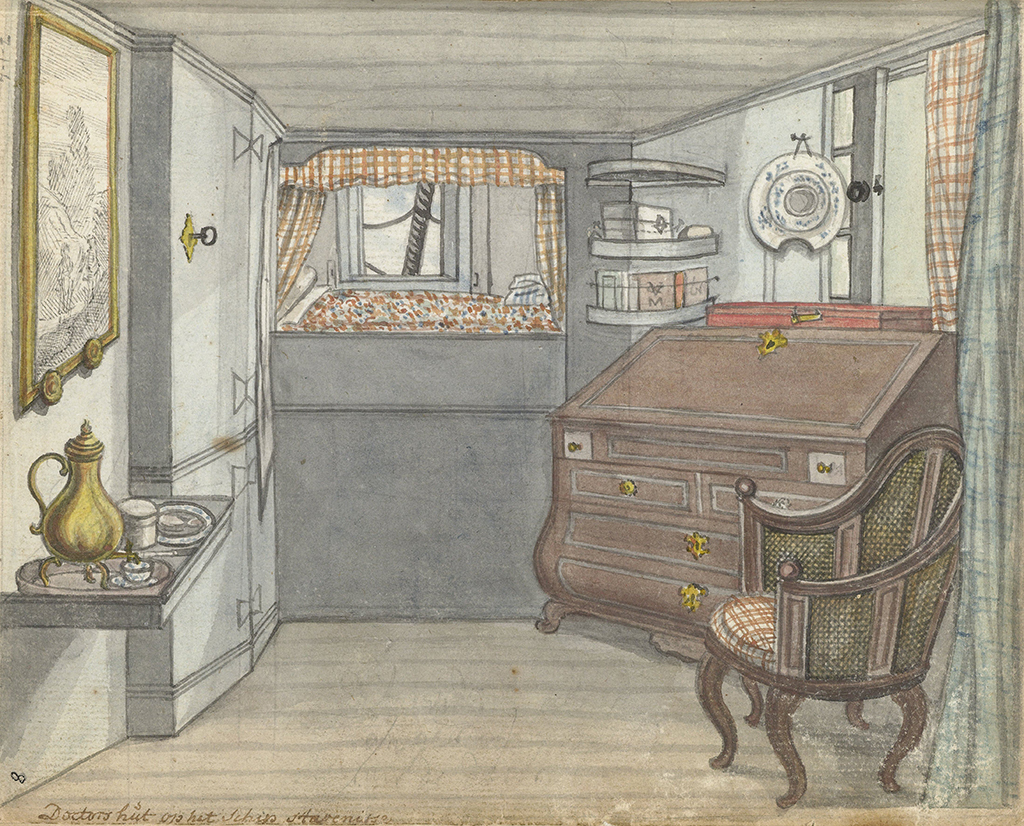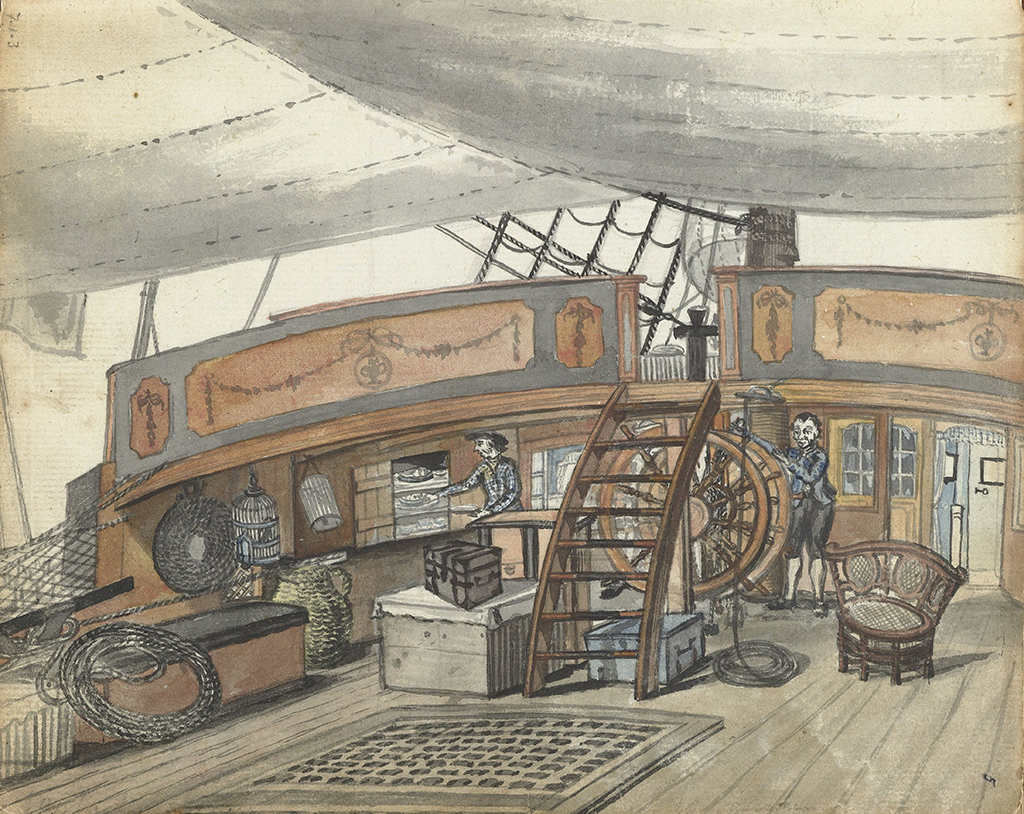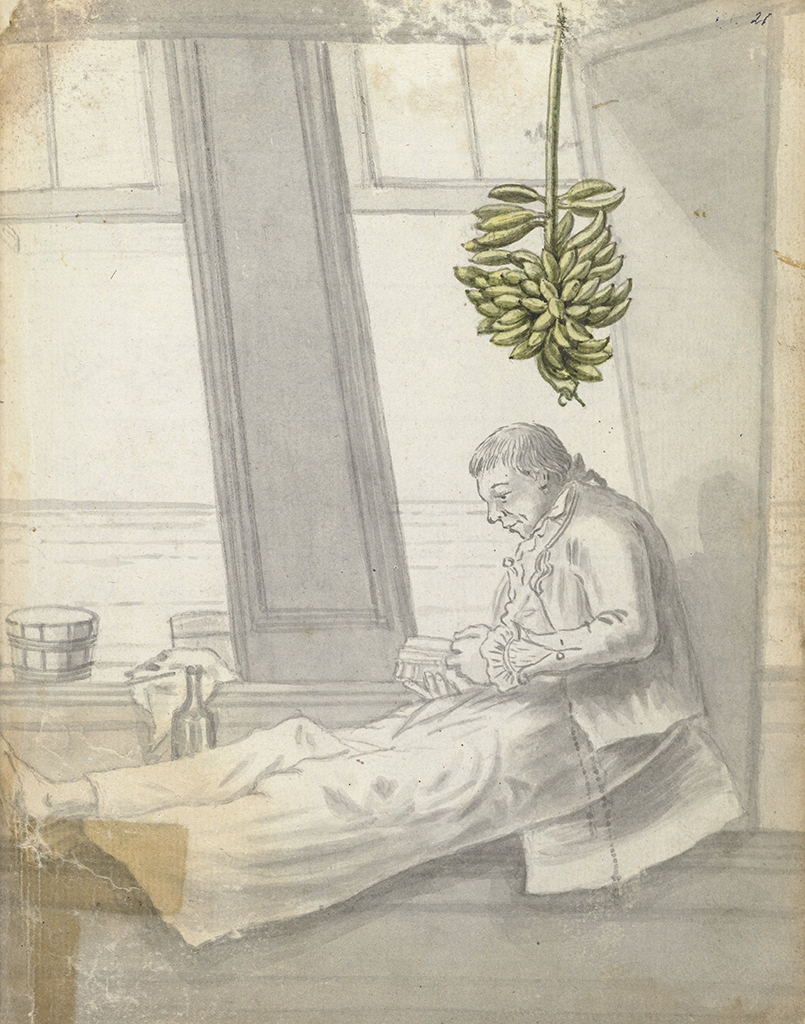
You might be feeling a touch of cabin fever at the moment, especially if you’re stuck in one room self-shielding for 12 weeks. The voyage from Europe to the East Indies in the eighteenth century lasted longer than that, although the ship’s surgeon who occupied this cabin could keep company with the officers when not ministering to the sick.
The cabin was depicted by a young Dutch pastor named Jan Brandes, who was sent out to serve in Batavia. It was also the surgeon’s consulting-room, but his patients would remain outside it and poke their heads through the sliding window on the right, which probably opened onto a passageway. Tools of his trade are to hand. A shaving-basin on the wall was perhaps used for other clinical purposes; the flat red case on the bureau may contain his instruments.
The surgeon’s bunk looks small by our standards, but it has a window with a view of the sea (and of seamens’ legs as they climb the shrouds), a patterned counterpane and what might be his striped nightshirt neatly folded at the foot. On the left is a samovar with a tea-cup ready. You have the feeling that the most important thing in the cabin is the surgeon’s capacious armchair.

Brandes also observed this view on deck. There’s another chair, beside the helmsman, but not for him. A parrot in a cage is on the shady side of the ship, so this may be a westbound homeward passage. Also in the shade is a larder, from which a liveried servant extracts dishes of food. That would be for the captain or the superior passengers.
For the passengers, the boredom of endless ocean was a thing to contend with. Some wrote long letters (the historian Macaulay did that on a passage to Madras). Brandes also shows us a man who has found an airy spot to read a book. At his side is a bottle and above him hangs a bunch of bananas.
These images are from the the Rijksmuseum, Amsterdam, and the curator’s description suggest this one may be a self-portrait. I tend to think not, since his clothing suggests he is a mariner, if too old to be a midshipman. He was, though, someone who could stay still long enough to have his portrait taken.
